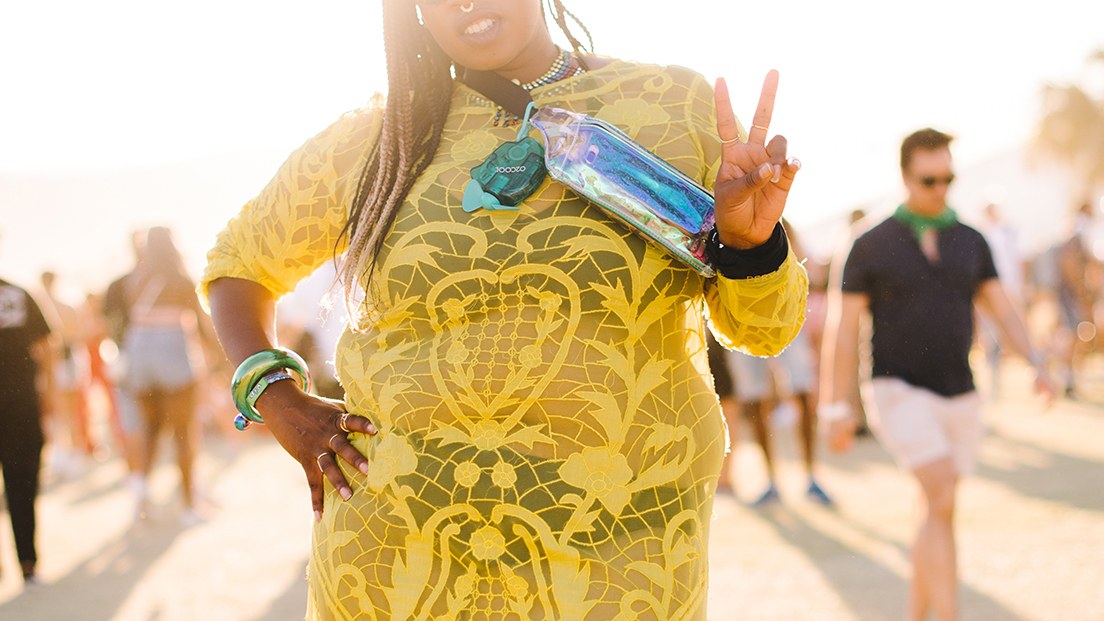What It's Like to Be Fat at a Music Festival

That all-too-familiar time of year has once again arrived where every influencer, blogger, and fortunate person on your social media feed is snapping photos and videos from one of the many major music festivals happening nationwide. Coachella, which just concluded, is of course the most popular. But festivals like Firefly, Lightning in a Bottle, and Lollapalooza draw large crowds as well. Brands take full advantage of festival season, launching campaigns to promote the latest trends that will make for the most Instagrammable photos. But there’s a common thread, and a catch: In all the promotions, every attendee seems to look the same.
Thin, toned, tan—based on the ads that brands run in the lead-up to festival season, those seem to be the three qualifications to attend. Photos of size-00 women in boho-glam outfits (think: cut-out dresses, oversized sunglasses, patterned crop tops) dominate the “festival” pages of brands’ websites, promoting the laid back, careless vibe of the music-filled weekends. No matter what’s “on trend” at a given moment, these outfits tend to look the same. (There’s not much evolution when it comes to the Coachella aesthetic, unless you’re James Charles.) But it’s not just the clothes. It’s also the models.
“Almost all media representation I see of Coachella centers on thin, white women,” says Sarah Chiwaya of Curvily, a plus-size style blog. Chiwaya had been reluctant to attend the festival for that reason, but when Coachella announced that Beyoncé would headline in 2018, she decided to chance it. To her surprise, attendees at the festival were highly diverse: “As a blogger who is all about rejecting garbage outdated ‘fashion rules’ about what fat people can wear, it was so damn heartwarming to see fat girls rocking sheer looks, bold colors, crop tops, and all the attention-getting looks we’ve been told are not for us.”
Kelly Augustine, an influencer, echoes Chiwaya. “I have never been shamed at a festival,” she says, adding, “Everyone is just there to enjoy the music and have a good time.”
But Rosaliz Jimenez, fashion and photo director at Dia & Co, a digital styling service for plus-size women, sees room for the events to improve and compares campaigns for festivals like Coachella to Fashion Week. That is, the ads seem to insinuate that it’s more “aesthetic” or “aspirational” to be thin. It’s no secret that plus-size people are there. It’s just seems to be acceptable to take them (and their business) for granted.
“No one thinks about how to market to us despite that fact that…a majority of American women are plus-size,” as Jimenez puts it. And plus-size men tend to be left out of the equation as well. The campaigns send a signal to those who aren’t thin: You are not a demographic we feel the need to appeal to.
For fashion influencer Natalie Drue, the message was received loud and clear. She points out that it’s not just the ads that are the problem, which set bizarre expectations for who festivals are for, but the trends themselves: “I get chub rub! My thighs rub together like wild, so if I’m wearing a dress, I have to wear a second layer of anti-chafe shorts underneath and, boom, now it’s even hotter! I’d love to see more effort and thought into the plus-size festival wear sector. I want to see more breathable fabrics with less sleeves and rad touches like sequins or loud patterns.”
Chiwaya adds that she’s seen countless “festival-style” collections with zero plus-size options even on sites that otherwise have extended sizes. But, she points out, the demand is there. “When I wore a full sequin look last year, I had so many plus women coming up to me, saying they wish they knew where to shop something like that. That’s a missed business opportunity, brands!”
